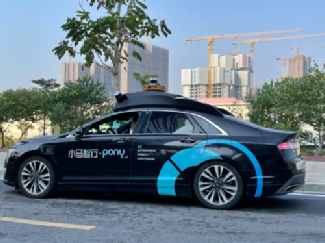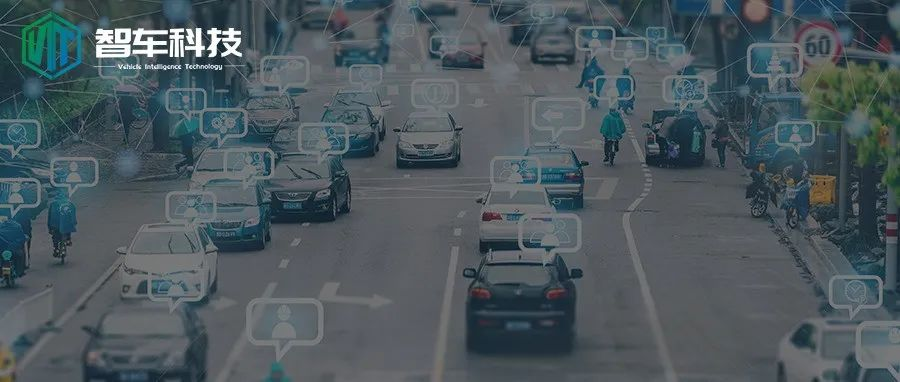Introduction
As 2021 comes to an end, this has been a year of breaking through for the autonomous driving industry. More and more startup companies and major players have joined the industry, promoting the rapid development of autonomous driving technology and allowing the public to experience the convenience of technology firsthand. And as commercial implementation is the ultimate goal of autonomous driving, there have been significant advancements in this area over the past year. From companies such as Meituan, Baidu, and 2winner sending unmanned delivery vehicles to support during the Guangzhou epidemic, to Meituan’s unmanned delivery vehicles “Magic Bag 20” becoming the first to achieve regular operation on Beijing’s public roads, to Mokucar’s autonomous driving technology being used in a large-scale trial run of various autonomous driving public service vehicles in cities, it is clear that autonomous driving has entered the second half, and all enterprises have begun preparations for commercial implementation.
In November of this year, Beijing officially launched the first autonomous driving service commercial pilot in China, and Baidu and Xiaoma Zhixing became the first enterprises permitted to carry out commercial pilot services. This marked the moment where China’s autonomous driving industry entered a new phase of commercial implementation exploration. It has a significant milestone significance for future travel transformation. Starting in Beijing, autonomous driving will truly enter the commercial implementation phase and become part of people’s daily lives.
Unmanned Vehicle Commercial Implementation Themed on Scenarios
More and more companies have come to the realization that a full-scenario L4 autonomous driving is a difficult mountain to climb, and without policy support, the technical bottlenecks make many companies hesitant to pursue this objective. After all, capital will not continue to support the continuous burning money of an autonomous driving prospect whose commercial prospects are unclear. To achieve the ultimate goal of L5 autonomous driving, there has been a consensus among enterprises to take one step at a time and limit themselves to specific scenarios to gradually overcome the obstacles. Closed parks and low-speed autonomous driving has become the first step in commercial implementation.
More and more companies have discovered the broad prospects in unmanned delivery, its routes are simple, speed is low, and demand is extremely high, making it an excellent choice for the first step in the commercial implementation of autonomous driving. Internet companies including Meituan, Alibaba, and JD have actual delivery needs and master higher-level autonomous driving core technology, making it natural for them to implement delivery in enclosed spaces. In the meantime, this year also saw the upstream and downstream supply chain for unmanned delivery gradually maturing. Bottom platform supplier Hema Zhixing has successfully initiated initial production, while hardware firms like Stern Jianchuan have introduced low-cost laser radar to reduce the operational costs of unmanned delivery vehicles, bringing confidence for the future of the industry.In addition, another landing scenario for autonomous driving is unmanned cargo transportation. Represented companies include TuSimple, WeRide, and more. At the online launch event “The Next” on September 9th this year, WeRide announced its entry into the light commercial vehicle market and its cooperation with JMC, the “first brand of light commercial vehicles,” and ZTO Express, a global leading integrated logistics services company, to enter the unmanned cargo transportation field. As the world’s first and only company to achieve L4 level autonomous driving technology for trucks, TuSimple is committed to the unmanned driving field of trucks, helping freight trucks achieve fully unmanned driving in the trunk logistics scene and semi-closed hub scenes, with a current road test of 4.506 million kilometers. These companies are targeting the market of unmanned cargo transportation because they see the infinite possibilities of autonomous driving in unmanned cargo transportation, and once successful in this direction, the savings in labor and material costs will be vigorously sought after by investors.

Finally, the most difficult direction for autonomous driving to be implemented is RoboTaxi. Its representative companies are currently the leader of autonomous driving in China, Baidu, and Xiaoma Zhixing. As the ultimate goal of autonomous driving – passenger transportation, RoboTaxi undoubtedly embodies the highest expectations in the industry, but at the same time, it also represents the highest difficulty in the industry. In order to achieve this goal, Baidu even started to manufacture its own cars and jointly established Jidu Auto with Geely. According to Li Yanhong, Jidu Auto will embody three technological concepts: free movement, natural interaction, and self-growth. First of all, Jidu’s cars have L4 level autonomous driving capability, allowing for “free movement.” Secondly, the car will achieve precise recognition of human-car interaction and voice semantics, enabling the car to “naturally communicate,” understand user emotions, and respond to user needs in real-time. Thirdly, the car can learn and iterate according to the user’s usage habits, continuously optimizing the autonomous driving and intelligent cockpit experience, and realizing “self-growth.” It is reported that Jidu will announce its first concept car for Jidu Auto in the first half of 2022 and begin mass production and delivery of the first car robot in 2023. In addition, on August 18th this year, Baidu also launched an upgraded autonomous driving travel service platform – “Luobo Kuaipao”. In September, Baidu Apollo opened its fifth city for autonomous driving travel service – Shanghai. On November 25th, 2021, Baidu Apollo became the first company to obtain the commercial pilot service pilot license, and its autonomous driving travel platform, Luobo Kuaipao, welcomed the first commercial order. This is undoubtedly a crucial step for autonomous driving, and the commercialization of RoboTaxi’s first order officially marks the beginning of the commercial landing of autonomous driving, also indicating that the real competition between autonomous driving companies is about to begin.## Lowering Cost Brings New Possibility to Deployment
The cost of autonomous vehicles used to be extremely high, especially a few years ago. The conversion of chassis control for a vehicle would cost tens of thousands of yuan; a single LiDAR system could cost tens of thousands of yuan as well. Some vehicles even require multiple LiDARs to ensure their autonomous driving capability. As a result, the cost of autonomous vehicles is usually sky-high, making them more like precision instruments in a laboratory than practical devices suitable for large-scale deployment.
Fortunately, as sensor manufacturers compete on cost and performance, the once-overpriced LiDAR is no longer beyond reach. At the China Automotive Blue Book Forum on June 11th this year, five well-known LiDAR companies, Suteng JuChuang, Hesai Technology, Waymo, Innovusio and MJTech, all expressed optimism about the upcoming mass production of LiDARs. The successful mass production of LiDARs would be a significant boost for the entire autonomous driving industry and means autonomous driving can be equipped on even cheaper vehicles, fulfilling the vision of accelerating the deployment of autonomous driving.

Towards the end of this year, DeepRoute-Drive 2.0, a complete L4-level autonomous driving solution including five solid-state LiDARs and eight cameras with redundant multi-sensor capabilities, was revealed by the autonomous driving company Yuanrong Qixing, a company invested by Alibaba. Yuanrong Qixing also demonstrated its latest automatic driving ability on real roads in the core area of Central Business District (CBD) during evening rush hour without any intervention throughout the journey. With its headquarters located in Nanshan District, Shenzhen, Yuanrong Qixing’s low-cost solution for autonomous driving has brought great expectations to the industry, despite the abundance of autonomous driving demos in the market.
Policies Supporting Commercial Deployment
For autonomous driving to be implemented on a large scale and make a profit, the most important factor is policy support from government organizations. From the emergence of new technologies to their applications, the full support of regulatory authorities is essential to ensure that consumers can use new technologies safely and confidently. In particular, for autonomous driving to consider the safety concerns of the industry involving consumer’s lives.Starting this year, commercialization policies for the unmanned driving industry have gradually been opened up, starting from Beijing. On November 25th of this year, Beijing officially opened the first domestic automatic driving travel service commercial pilot, and Baidu and Xiao Ma Zhixing became the first companies to be allowed to conduct commercial pilot services. This marks a new stage in the exploration of commercial pilot projects in the field of automatic driving in China, and has a milestone significance for changing the way of future travel.
At the same time, the “Implementation Rules for the Management of Commercialization Pilot Projects of Automatic Driving Travel Services in the First Area for Intelligent Network-connected Vehicles (Trial Implementation)” was also issued simultaneously. At this stage, a commercial pilot service for no more than 100 automatic driving vehicles will be launched within a range of 60 square kilometers in the Beijing Economic and Technological Development Zone. Under the premise of guaranteeing the principle of fair market competition, companies can adopt a market-oriented pricing mechanism and can only initiate experience charging services with clear pricing principles and payment methods for passengers.
Supported by policies, Beijing has become a new high ground for automatic driving in China. Starting in 2016, Beijing led the exploration of the “China route” for automatic driving. Beijing Yizhuang has also become the world’s first demonstration zone for high-level automatic driving with network-connected cloud control. By promoting the fusion mode of vehicle, road, cloud, network, and map, ensuring the safe operation of automatic driving, and laying the foundation for commercial pilot projects. Next, the first area for intelligent network-connected vehicles policy-leading in Beijing will gradually expand the range of commercial pilot roads or areas to support enterprises to gradually transition from unmanned road testing to unmanned commercial pilot projects.
“Represented by Beijing, the commercialization of automatic driving has gradually entered multiple cities throughout the country.” In March of this year, Mushroom Carlink signed a cooperation project with the Hengyang Municipal Government in Hunan Province, with a total investment of 500 million yuan. Mushroom vehicles will provide a set of “smart bicycles + vehicle-road coordination” solutions to be implemented in Hengyang, bringing about a new commercial model for automatic driving. Vehicle-road coordination will be a good supplement to smart bicycles, and this will require support from government departments including policies, infrastructure, and basic facilities. The Hengyang project is progressing normally, orderly and quickly under the guidance and deployment of governments at all levels and multiple ministries.
Under the background of policy support from Beijing to cities nationwide, the commercialization process of automatic driving has finally reached a new stage. With the guidance of the demonstration zone in Beijing, it is believed that automatic driving will take root in more cities, and more companies will qualify and begin to offer commercial unmanned shuttle services, allowing the public to experience the progress brought about by technology in life.
In the second half of automatic driving, commercial competition has heated up.2021 is about to come to an end. In this year, autonomous driving has been steadily advancing and getting closer to our daily lives. Only when technology is truly used for the benefit of the people can it truly play its own value. More and more companies are entering the field of autonomous driving, and they have quickly found the direction for commercialization. As a result, autonomous driving has entered the second half, and the commercial competition has gradually become intense. For a new industry, enterprises that take the lead in occupying the market will have great advantages. For autonomous driving companies, nobody will miss this opportunity.
In the near future, autonomous driving will be able to effectively solve user pain points, improve our lives and transportation. The development and maturity of technology will inevitably change our lives. It is hoped that the development of autonomous driving can explore more scenarios that can improve our lives and allow more people to enjoy the convenience brought by autonomous driving.
This article is a translation by ChatGPT of a Chinese report from 42HOW. If you have any questions about it, please email bd@42how.com.
